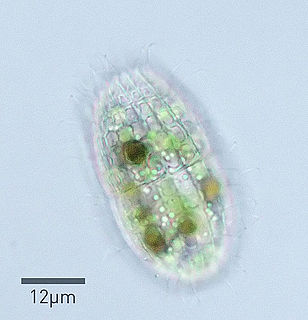
The rove beetles are a family (Staphylinidae) of beetles, primarily distinguished by their short elytra that typically leave more than half of their abdominal segments exposed. With roughly 63,000 species in thousands of genera, the group is currently recognized as the largest extant family of organisms. It is an ancient group, with fossilized rove beetles known from the Triassic, 200 million years ago, and possibly even earlier if the genus Leehermania proves to be a member of this family. They are an ecologically and morphologically diverse group of beetles, and commonly encountered in terrestrial ecosystems.

Platerodrilus is a genus of beetles of the family Lycidae. They commonly appear in the literature under the name Duliticola, which is an obsolete junior synonym. The females retain a larval form as adults and are about 40–80 mm in length. The females and larvae have a flattened, dark body with large scales over the head, resembling trilobites, hence the informal names Trilobite beetle, Trilobite larva or "Sumatran Trilobite larva". In contrast, the males are much smaller, 8–9 mm, resembling other beetles. Species are found in tropical rainforests of India and South-east Asia.

Mimetes hirtus is an upright, evergreen shrub of 1½–2 m high from the family Proteaceae. It has upright, overlapping, (broadly) lance-shaped leaves, without teeth, but with one thickened pointy tip. It has cylindric inflorescences topped by a pine apple-like tuft of pinkish-brownish, smaller and more or less horizontal leaves. The flowerheads are tightly enclosed by yellow, red-tipped bracts, only the 9–14 long red styles and the whitish silky tips of the perianth sticking out. It is primarily pollinated by the Cape sugarbird. It is an endemic species of the southwest of the Western Cape province of South Africa, and grows in wet zones at the base of south facing mountain slopes. Flower heads may be found from May to November, but peaks in July and August. The species has several vernacular names of which marsh pagoda seems to be used most.

Coleps is a genus of ciliates in the class Prostomatea with barrel-shaped bodies and a test made of biomineralized plates.

Onthophagus is a genus of dung beetles in the Onthophagini tribe of the wider scarab beetle family, Scarabaeidae. It is the most species-rich and widespread genus in the subfamily Scarabaeinae, with a global distribution.
Trinodes is a genus of beetles in the family Dermestidae, the skin beetles. The genus is distributed in the Palearctic, Oriental, and Afrotropical realms. There are about 16 species.
Xenophonus hirtus is a species of beetles in the family Carabidae, the only species in the genus Xenophonus.
Scotodipnus is a genus of beetles in the family Carabidae, containing the following species:
Orthogonius hirtus is a species of ground beetle in the subfamily Orthogoniinae. It was described by Chaudoir in 1871.

Hemicrepidius hirtus is a species of click beetle belonging to the family Elateridae.
Anelaphus hirtus is a species of beetle in the family Cerambycidae. It was described by Chemsak and Noguera in 2003.
Acartus is a genus of beetles of the tribe Acanthocinini of the subfamily Lamiinae, in the family Cerambycidae, containing the following species:
Acartus abyssinicus is a species of beetle in the family Cerambycidae. It was described by Stephan von Breuning in 1955.
Acartus biplagiatus is a species of beetle in the family Cerambycidae. It was described by Per Olof Christopher Aurivillius in 1926.
Acartus bituberosus is a species of beetle in the family Cerambycidae. It was described by Stephan von Breuning in 1959.
Acartus penicillatus is a species of beetle in the family Cerambycidae. It was described by Per Olof Christopher Aurivillius in 1907.
Acartus rufus is a species of beetle in the family Cerambycidae. It was described by Stephan von Breuning in 1964.

Emus hirtus is a species of rove beetle native to Southern and Central Europe. It is attracted to cow and horse manure.
Involvulus hirtus is a species of leaf rolling weevil in the beetle family Attelabidae.
Eurysphindus hirtus is a species of cryptic slime mold beetle in the family Sphindidae. It is found in North America.






